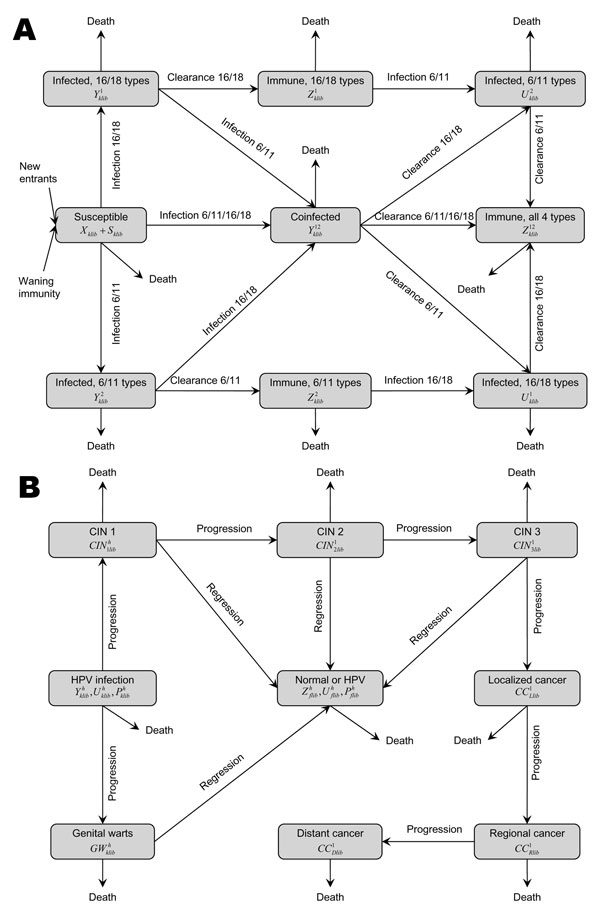Volume 13, Number 1—January 2007
Research
Model for Assessing Human Papillomavirus Vaccination Strategies
Figure 1

Figure 1. A simplified schematic diagram of human papillomavirus (HPV) infection and disease state transitions, lifetime duration of infection-derived immunity, unvaccinated compartments. A) Persons enter into the susceptible (X) compartment and leave all compartments at sex- and age-specific rate. A susceptible host may be infected by either or both HPV types. A host infected with a given type can also be infected with the other type and move into compartment (Y12). An infected person can clear infection with 1 type and can become immune to that type (Zh) and get infected with the other type (Uh). Infection with and clearance of all types results in lifetime immunity. B) Cervical intraepithelial neoplasia (CIN) develops in females and progresses though several histologic states: infected with a normal cervix; CIN 1; CIN 2; CIN 3; localized, regional, and distant cervical cancer. CIN can regress to normal with or without infection. Genital warts can develop and clear in those infected with HPV 6/11.